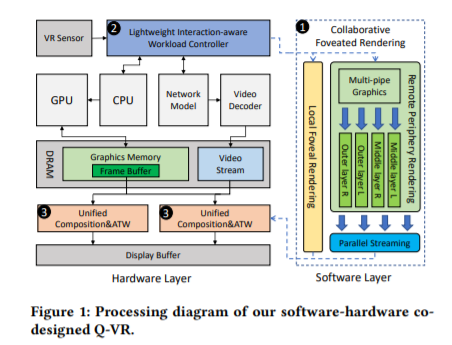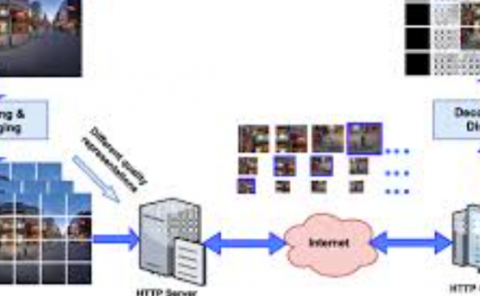Q-VR: System-Level Design for Future Mobile Collaborative Virtual Reality
PubDate: Feb 2021
Teams: Pacific Northwest National Laboratory;University of Sydney;University of Texas at Dallas;University of Washington
Writers: Chenhao Xie, Xie Li, Yang Hu, Huwan Peng, Michael Taylor, Shuaiwen Leon Song
PDF: Q-VR: System-Level Design for Future Mobile Collaborative Virtual Reality

Abstract
High Quality Mobile Virtual Reality (VR) is what the incoming graphics technology era demands: users around the world, regardless of their hardware and network conditions, can all enjoy the immersive virtual experience. However, the state-of-the-art software-based mobile VR designs cannot fully satisfy the realtime performance requirements due to the highly interactive nature of user’s actions and complex environmental constraints during VR execution. Inspired by the unique human visual system effects and the strong correlation between VR motion features and realtime hardware-level information, we propose Q-VR, a novel dynamic collaborative rendering solution via software-hardware co-design for enabling future low-latency high-quality mobile VR. At software-level, Q-VR provides flexible high-level tuning interface to reduce network latency while maintaining user perception. At hardware-level, Q-VR accommodates a wide spectrum of hardware and network conditions across users by effectively leveraging the computing capability of the increasingly powerful VR hardware. Extensive evaluation on real-world games demonstrates that Q-VR can achieve an average end-to-end performance speedup of 3.4x (up to 6.7x) over the traditional local rendering design in commercial VR devices, and a 4.1x frame rate improvement over the state-of-the-art static collaborative rendering.



